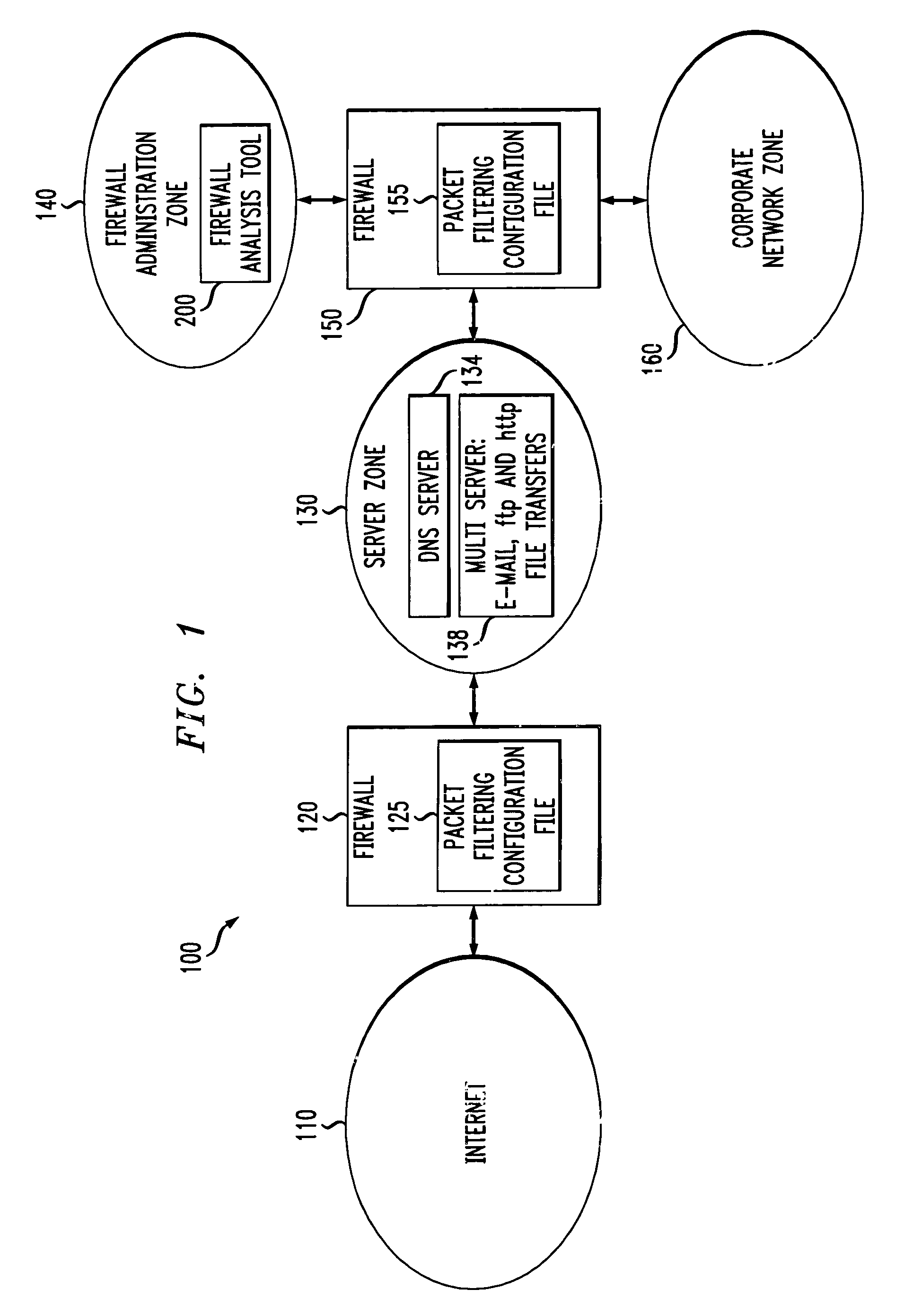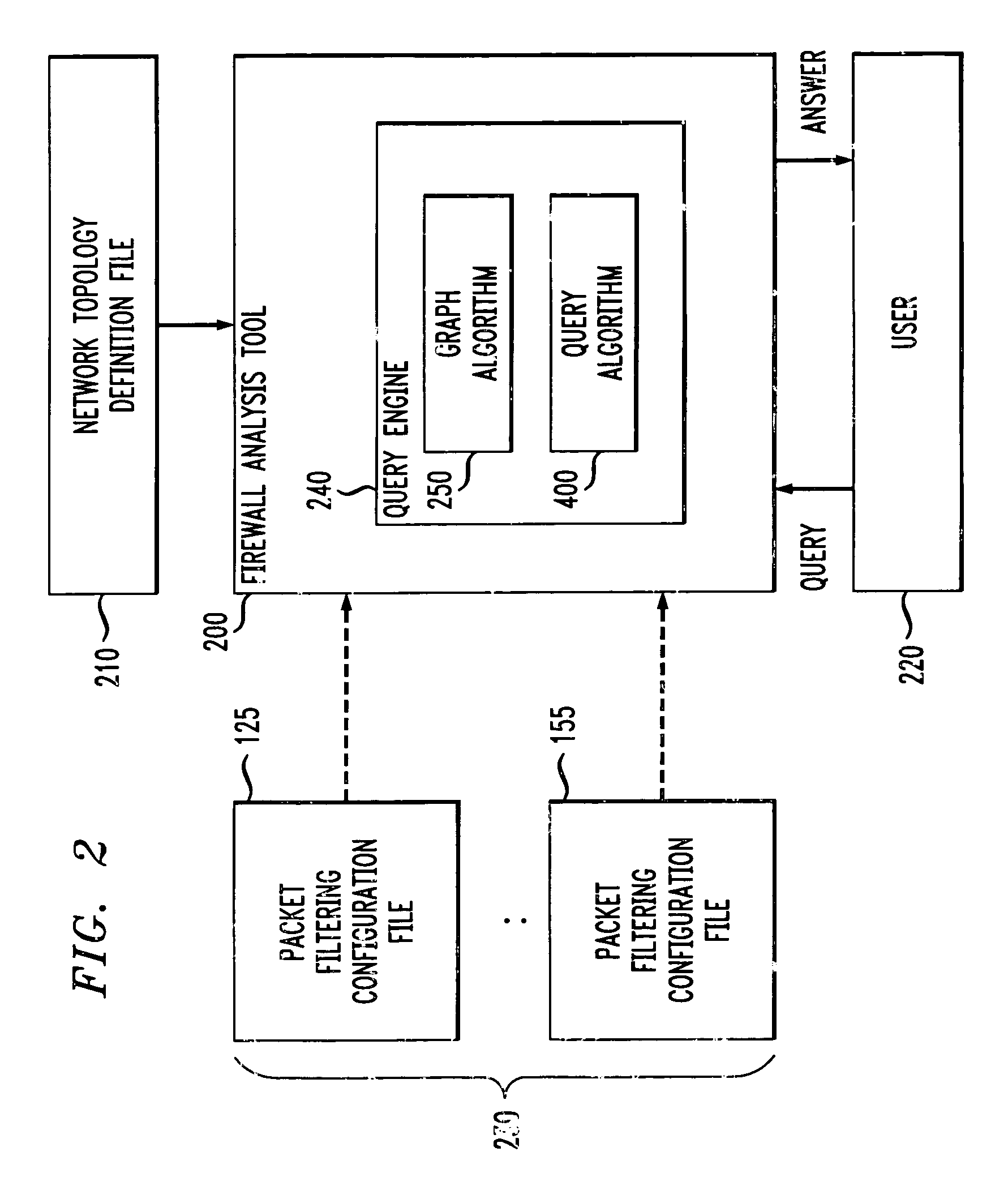Method and apparatus for analyzing one or more firewalls
a firewall and security policy technology, applied in the field of firewalls, can solve the problems of increasing the complexity of designing and managing the rule-base, fewer, if any, advances in firewall configuration and management, and the failure of firewalls to be implemented
- Summary
- Abstract
- Description
- Claims
- Application Information
AI Technical Summary
Benefits of technology
Problems solved by technology
Method used
Image
Examples
example
[0064]Consider the query: “What services are allowed between the corporate zone and the DMZ?” The results, shown in FIG. 5, reflect that the firewall configuration was done correctly in this regard. The services are available to all the hosts in the corporate zone, but only control can open any tcp connection to the servers. In addition, note that only the names of the host and service groups are displayed, but more detail (like actual IP address and port numbers) are available by expanding an entry (optionally via a mouse-click).
[0065]In another example, consider the query: “How much access does the Internet 110 have to the internal network 130, 140, 150?” The results are shown in FIG. 6. The first five lines of the results show that any host on the Internet 110 has some restricted access to the servers on the DMZ 130. Furthermore, from the point of view of the firewall analysis tool 200, any host in the Internet zone 110 can speak to any other host in that zone 110, which explains...
PUM
 Login to View More
Login to View More Abstract
Description
Claims
Application Information
 Login to View More
Login to View More - R&D
- Intellectual Property
- Life Sciences
- Materials
- Tech Scout
- Unparalleled Data Quality
- Higher Quality Content
- 60% Fewer Hallucinations
Browse by: Latest US Patents, China's latest patents, Technical Efficacy Thesaurus, Application Domain, Technology Topic, Popular Technical Reports.
© 2025 PatSnap. All rights reserved.Legal|Privacy policy|Modern Slavery Act Transparency Statement|Sitemap|About US| Contact US: help@patsnap.com



